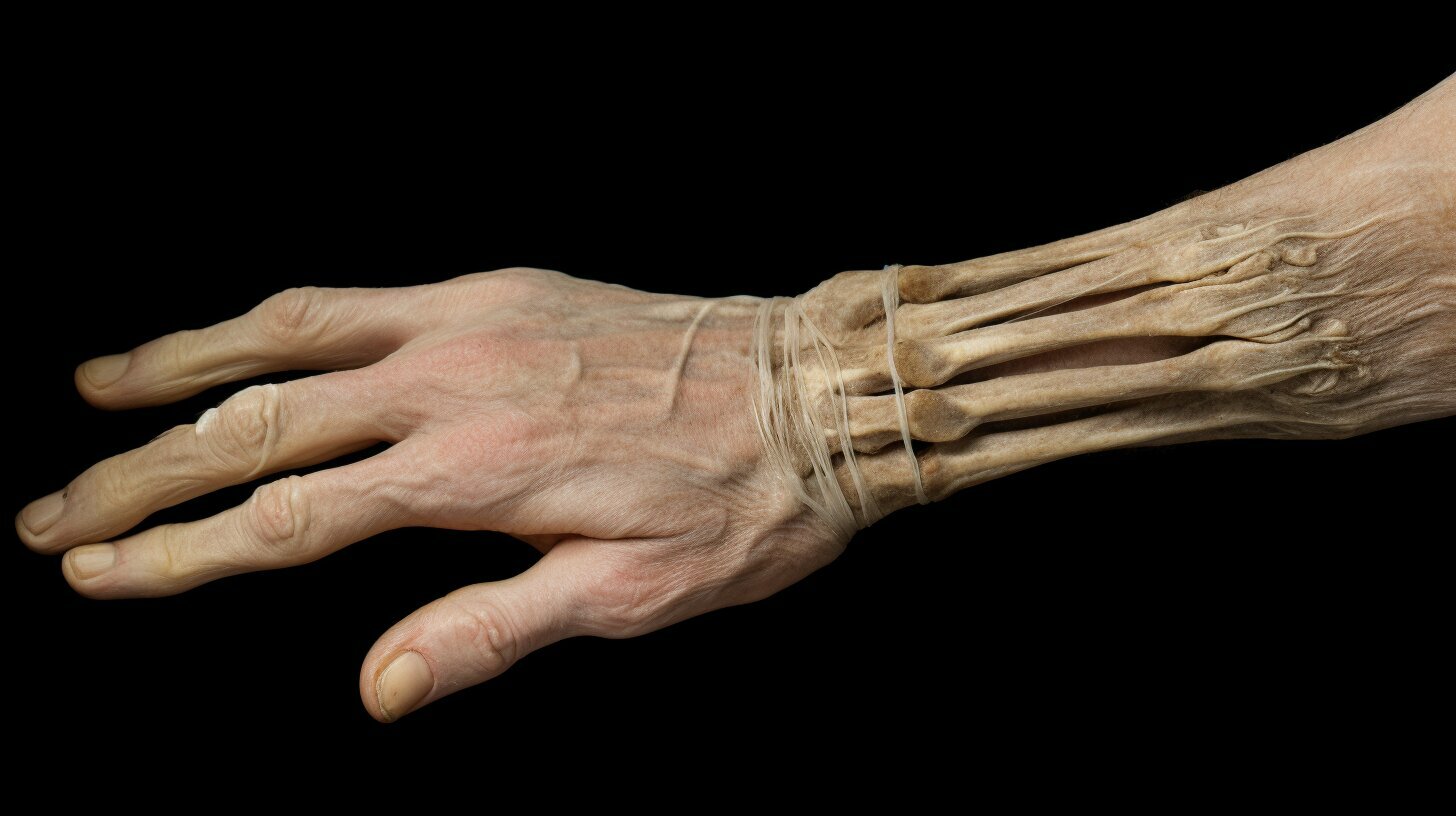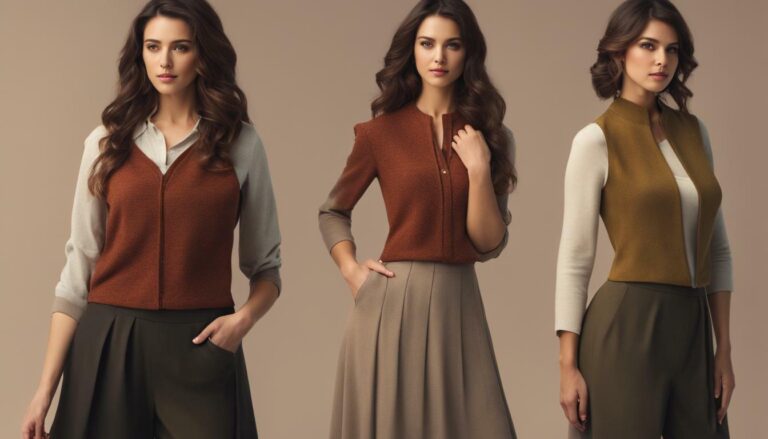What body type has skinny wrists?
According to body type theory, there are three main body types: ectomorph, mesomorph, and endomorph. Each body type has its own characteristics, and some body types may be more likely to have skinny wrists than others. To determine your body type, you can perform a simple test by encircling one wrist with your other hand’s middle finger and thumb. If they don’t touch, you may be an endomorph. If they just touch, you may be a mesomorph. And if they overlap, you may be an ectomorph. However, it’s important to note that body type is not the sole determinant of wrist size, as other factors such as genetics and bone structure also play a role.
Key Takeaways:
- There are three main body types: ectomorph, mesomorph, and endomorph.
- Wrist size can vary among individuals within the same body type.
- Genetics and bone structure are primary factors influencing wrist size.
- Accept and embrace your natural body type instead of comparing it to societal standards.
- Getting enough quality sleep is crucial for overall health and fitness goals.
Understanding Ectomorph Body Type
Ectomorphs are characterized by their long and lean body shape. With a fast metabolism and difficulty gaining muscle mass, ectomorphs often have thin wrists and a delicate bone structure. The lack of muscle mass can make their wrists appear skinny, contributing to their overall slender physique. However, it’s essential to note that wrist size can still vary among individuals within the ectomorph body type, as genetics and other factors play a role.
Ectomorphs are commonly known for their lean build and may have lower body weight and less body fat compared to other body types. This can further accentuate the appearance of thin wrists. However, it’s crucial to remember that wrist size is not solely determined by body type, but rather by a combination of genetics, bone structure, and other individual factors.
“Ectomorphs often have thin wrists and a delicate bone structure. The lack of muscle mass can make their wrists appear skinny, contributing to their overall slender physique.”
Understanding Ectomorph Body Composition
When examining ectomorph body composition, it’s important to consider the distribution of muscle, fat, and bone within the body. Ectomorphs typically have a lower percentage of body fat and less muscle mass compared to other body types. This can lead to a more slender appearance, including thin wrists.
The combination of a fast metabolism, difficulty in gaining muscle mass, and overall lean body composition can contribute to the distinctive features associated with ectomorphs, including thin wrists. It’s worth noting that body composition can be influenced by various factors such as lifestyle, diet, and exercise habits, which can further influence the appearance of wrist size.
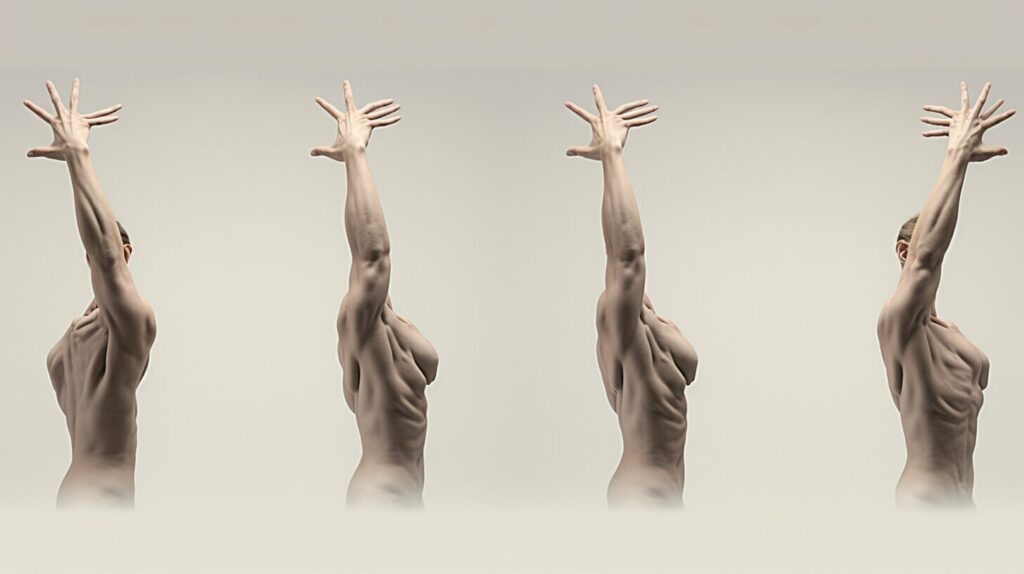
| Characteristics of Ectomorph Body Type | Impact on Wrist Size |
|---|---|
| Long and lean body shape | Thin wrists due to lack of muscle mass |
| Fast metabolism | Potential lower body weight and less body fat, which can accentuate the appearance of thin wrists |
| Difficulty gaining muscle mass | Contributes to the slender physique, including the appearance of thin wrists |
| Delicate bone structure | Can influence the size and appearance of wrists |
Overall, understanding the ectomorph body type can shed light on why individuals with this body type often have thin wrists. However, it’s important to remember that body composition and wrist size can still vary among ectomorphs, and other factors such as genetics and bone structure also contribute to wrist size.
Exploring Mesomorph Body Type
Mesomorphs are known for their well-defined muscles and athletic physique. This body type is characterized by a moderate bone structure and a higher muscle mass compared to ectomorphs and endomorphs. Mesomorphs often possess a naturally muscular build and are more likely to develop and maintain lean muscle mass.
One of the notable characteristics of mesomorphs is their ability to easily gain muscle and transform their physique through exercise and strength training. Their well-developed muscles can give them a more proportionate and athletic appearance, which includes not only the major muscle groups but also the muscles in their wrists.
H3: Exploring Muscle Development in Mesomorphs
The distinct advantage that mesomorphs have in terms of muscle growth can influence the appearance of their wrists. The well-defined muscles in their arms and forearms can contribute to a more developed musculature around their wrists, making them appear less slender compared to other body types.
It’s important to note that wrist size can still vary among individuals within the mesomorph body type. Factors such as genetics, overall body composition, and the distribution of muscle mass can all play a role in determining the size and appearance of the wrists. While mesomorphs generally have a more well-defined muscular structure, it’s not a guarantee that all mesomorphs will have naturally thicker or wider wrists.
| Mesomorph Body Type Characteristics | Examples |
|---|---|
| Well-defined muscles | Bodybuilders, athletes |
| Moderate bone structure | Athletic individuals |
| Higher muscle mass | Powerlifters, sprinters |
Having a mesomorph body type doesn’t automatically mean you will have well-defined muscles and a certain wrist size. It’s essential to remember that genetics, lifestyle choices, and overall body composition all play a role in determining individual variations within the mesomorph body type.
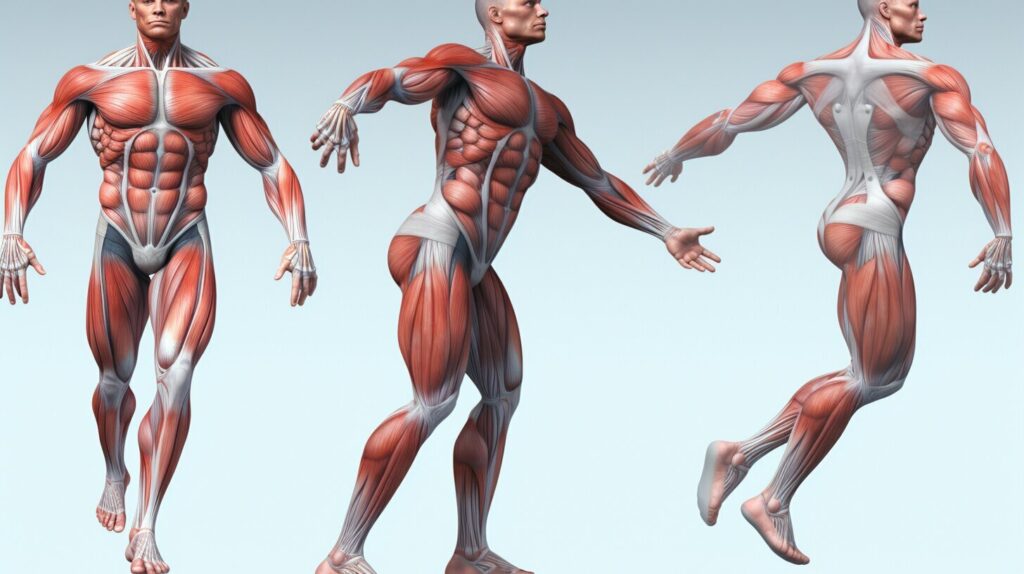
Understanding your body type, including being aware of mesomorph characteristics, can help guide your fitness and wellness journey. By embracing your natural body type and focusing on a balanced approach to exercise, nutrition, and self-care, you can maximize your potential and achieve your personal health and fitness goals.
Understanding Endomorph Body Type
Endomorphs have a round and soft body shape with a tendency to store more body fat. They typically have wider hips and a higher body fat percentage. While endomorphs may not have naturally skinny wrists, their broader body structure can sometimes make their wrists look proportionate. It’s important to remember that wrist size can vary among individuals within the endomorph body type based on genetics and other factors.
Endomorphs have a unique body composition that sets them apart from other body types. Their round physique and higher body fat percentage can contribute to a more curvaceous appearance. While endomorphs may not have naturally thin wrists, their broader body structure can create a balanced and proportionate look. It’s important to embrace and celebrate your body type, recognizing that beauty comes in many different shapes and sizes.
In understanding the endomorph body type, it’s crucial to note that everyone’s body is unique, and individual variations exist even within the same body type. While some endomorphs may have wider wrists, others may have wrists that appear more slender due to factors like genetics and bone structure. It’s important not to generalize or compare oneself to others, but rather to focus on overall health and well-being regardless of wrist size or body type.
| Body Type | Characteristics | Wrist Size |
|---|---|---|
| Endomorph | Round physique, higher body fat percentage | May have wider wrists due to broader body structure |
| Mesomorph | Well-defined muscles, athletic physique | May have more proportionate wrist size due to muscle development |
| Ectomorph | Long and lean body shape | May have slender wrists due to lower muscle mass |
Remember that wrist size, like any other body part, does not define your worth or beauty. Embrace your body type, focus on overall health and well-being, and celebrate the uniqueness that makes you who you are.
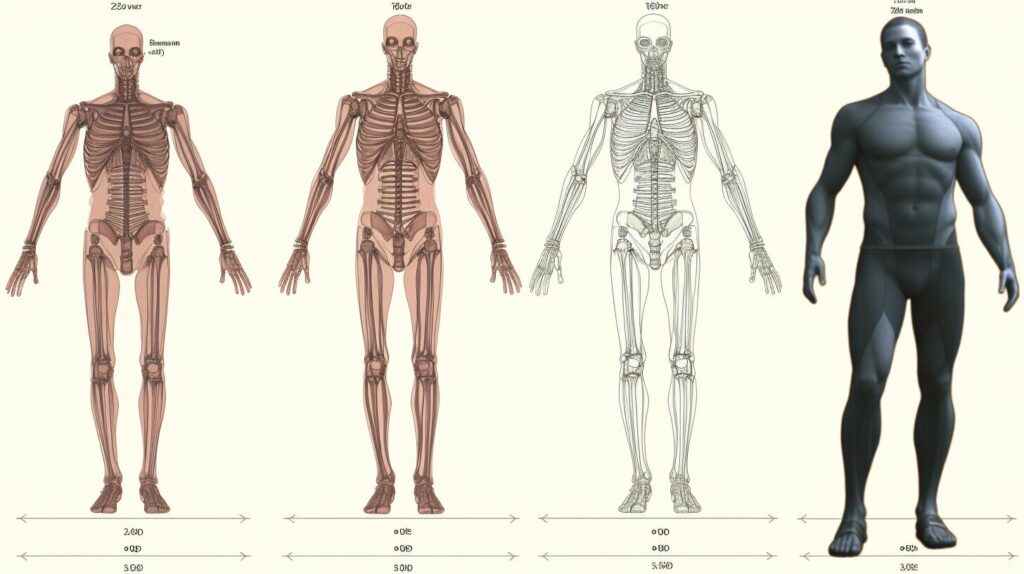
Factors Influencing Wrist Size
When it comes to wrist size, there are several factors that influence it beyond just body type. While body type can play a role, genetics and bone structure are the primary determinants of wrist size. Additionally, other factors such as muscle mass and overall body composition can also affect the appearance of wrist size.
Every individual has a unique combination of these factors, which contributes to variations in wrist size. For example, even within the same body type, there can be variations in wrist size due to genetics and other individual traits.
Genetics and Bone Structure
Genetics play a significant role in determining wrist size. The size of the wrist bones and the thickness of the surrounding tissues are influenced by genetic factors. Some individuals may have naturally narrower wrists due to their genetic makeup, while others may have wider wrists.
Bone structure also contributes to wrist size. Individuals with larger and denser bones may have broader wrists, while those with smaller and less dense bones may have narrower wrists. These variations in bone structure can occur within different body types.
Muscle Mass and Body Composition
Muscle mass and overall body composition can affect the appearance of wrist size. Individuals with higher muscle mass may have more defined wrists, making them appear larger and more proportionate. On the other hand, individuals with lower muscle mass may have thinner wrists, giving the illusion of smaller wrists.
Body composition, including the distribution of body fat, can also influence wrist size. Individuals with lower body fat levels may have more visible muscle definition, which can make their wrists appear larger. Conversely, individuals with higher body fat levels may have less visible muscle definition, which can make their wrists appear smaller.
It’s important to note that while these factors can contribute to variations in wrist size, there is no ideal or standard wrist size. Each individual’s body is unique, and what matters most is embracing and working with your natural body type.
| Factors | Description |
|---|---|
| Genetics | Genetic makeup influences bone size and thickness of surrounding tissues. |
| Bone Structure | Individuals with larger and denser bones may have broader wrists, while those with smaller and less dense bones may have narrower wrists. |
| Muscle Mass | Higher muscle mass can make wrists appear larger and more proportionate, while lower muscle mass can make wrists appear thinner. |
| Body Composition | Body fat levels and distribution can influence wrist size, with lower body fat levels potentially enhancing muscle definition and making wrists appear larger. |
In summary, wrist size is influenced by a combination of factors including genetics, bone structure, muscle mass, and body composition. These factors can lead to variations in wrist size among individuals, even within the same body type. Embracing and working with your natural body type is essential, as there is no ideal or standard wrist size. Celebrate the uniqueness of your body and focus on overall health and well-being rather than striving for a specific wrist size.
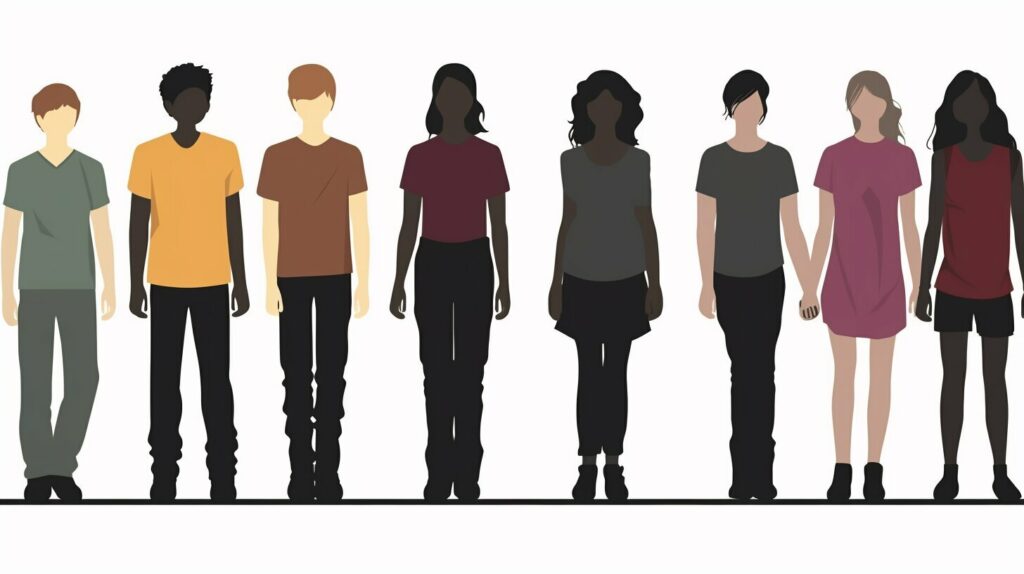
Body Types and Body Proportions
Narrow wrists are often associated with certain body types. While wrist size is just one aspect of overall body proportions, it can contribute to an individual’s overall body shape. Let’s explore how different body types may be associated with slender wrists and how embracing your natural body shape is essential for overall well-being.
Body Types with Slender Wrists
One body type that is often associated with slender wrists is the ectomorph. Ectomorphs tend to have a lean and slim body shape with delicate bone structure. Their faster metabolism and difficulty gaining muscle mass can make their wrists appear skinny. However, it’s important to remember that wrist size can vary among individuals, even within the same body type.
Another body type that may have slender wrists is the mesomorph. Mesomorphs have well-defined muscles and a more athletic physique. While they may not naturally have skinny wrists, their well-developed muscles can contribute to a more proportionate wrist size.
It’s important to note that these associations between body types and wrist size are generalizations, and individual variations are common. Genetics, bone structure, and other factors can also influence wrist size.
Embracing Your Body Shape
Instead of striving for a specific wrist size or body shape, it’s important to embrace and work with your natural body type. Each body type has its own unique characteristics and proportions, which contribute to your overall appearance. Comparing yourself to unrealistic societal standards can lead to dissatisfaction and frustration.
Focus on creating a fitness and wellness routine that suits your body type and supports your overall health and well-being. Celebrate your individuality and appreciate the strengths and challenges that come with your body type. Remember, your body is unique, and there is no one-size-fits-all ideal.

| Body Type | Characteristics |
|---|---|
| Ectomorph | Lean and slim body shape, delicate bone structure |
| Mesomorph | Well-defined muscles, more athletic physique |
| Endomorph | Rounded body shape, tendency to store more body fat |
Remember, your body is unique, and it’s important to embrace and care for it in a way that feels right for you. Focus on overall health, self-acceptance, and self-love, rather than striving for a specific wrist size or body shape.
Embracing Your Body Type
Accepting and embracing your body type is essential for overall well-being and self-confidence. Instead of trying to fit into societal standards or comparing yourself to others, it’s important to work with your own body type and focus on what makes you feel good.
Each body type has its own unique strengths and challenges. Whether you are an ectomorph, mesomorph, or endomorph, understanding your body type can help you make informed choices about your fitness and wellness routine.
Embracing your body type means finding balance and developing a positive relationship with your body. Rather than striving for a particular wrist size or body shape, focus on nourishing your body with a healthy diet, engaging in regular physical activity that you enjoy, and prioritizing self-care. Remember that your body is unique and beautiful just the way it is.
By accepting and working with your body type, you can cultivate self-love, confidence, and a healthier mindset. Celebrate your body’s abilities and appreciate the journey towards becoming your best self. Remember, accepting your body type is an ongoing process, and it may take time to fully embrace and love yourself for who you are.

Importance of Sleep for Fitness Goals
When it comes to achieving your fitness goals, sleep plays a crucial role that should not be overlooked. Getting enough quality sleep is essential for both your body and mind to function optimally. Sleep allows the body to recover and repair itself, making it an integral part of any fitness routine.
During sleep, the body produces hormones that aid in fat loss and muscle recovery. Lack of sleep can disrupt the delicate balance of these hormones, including testosterone and growth hormones, which are essential for muscle growth and repair. When you don’t get enough sleep, it can negatively impact your progress towards your fitness goals, whether it’s building lean muscle or losing body fat.
Research has shown that sleep deprivation can lead to decreased athletic performance, decreased cognitive function, and increased risk of injuries. It can also contribute to increased cravings for unhealthy foods and decreased motivation to exercise. These factors can hinder your ability to stick to a healthy and active lifestyle.
To support your body type and overall well-being, aim for at least 8 hours of sleep per night. Establish a consistent sleep schedule and create a sleep-friendly environment by keeping your bedroom cool, dark, and quiet. Avoid electronic devices before bed, as the blue light emitted can interfere with your sleep quality. If you struggle with sleep, consider implementing relaxation techniques or speaking with a healthcare professional for guidance.

In summary, sleep is an essential component of achieving your fitness goals, regardless of your body type. It plays a vital role in muscle recovery, fat loss, and overall performance. Prioritize quality sleep to support your body’s natural processes and optimize your fitness journey. Remember, a well-rested body is better equipped to reach its full potential.
Impact of Excess Body Fat on Health
Excess body fat can have detrimental effects on overall health, regardless of body type. Obesity, defined as having a body mass index (BMI) of 30 or higher, is associated with an increased risk of various health conditions and complications.
One of the major health consequences of excess body fat is an increased risk of cardiovascular problems. Obesity is a risk factor for conditions such as hypertension, coronary artery disease, and stroke. The accumulation of fat around the heart and blood vessels can lead to plaque formation and narrowing of the arteries, compromising blood flow and increasing the risk of heart attacks.
Obesity is also strongly linked to the development of type 2 diabetes. Excess body fat, particularly around the abdomen, can interfere with insulin function and lead to insulin resistance. This impairs the body’s ability to regulate blood sugar levels, increasing the risk of high blood sugar and the development of diabetes.
Furthermore, obesity is associated with an increased risk of certain cancers, including breast, colon, and pancreatic cancers. Adipose tissue produces hormones and inflammatory substances that can promote the growth of cancer cells. The presence of excess body fat can also contribute to hormonal imbalances that further increase the cancer risk.
| Health Consequences of Excess Body Fat | Risk Factors |
|---|---|
| Cardiovascular Problems | Hypertension, coronary artery disease, stroke |
| Type 2 Diabetes | Insulin resistance, high blood sugar levels |
| Cancer | Breast, colon, pancreatic, and other types of cancer |
In addition to these specific health consequences, excess body fat can also increase the risk of other conditions such as gallbladder disease, sleep apnea, osteoarthritis, and mental health issues, including depression and anxiety. It is essential to prioritize healthy weight management through a balanced diet, regular physical activity, and lifestyle modifications to reduce the risk of these health problems associated with excess body fat.
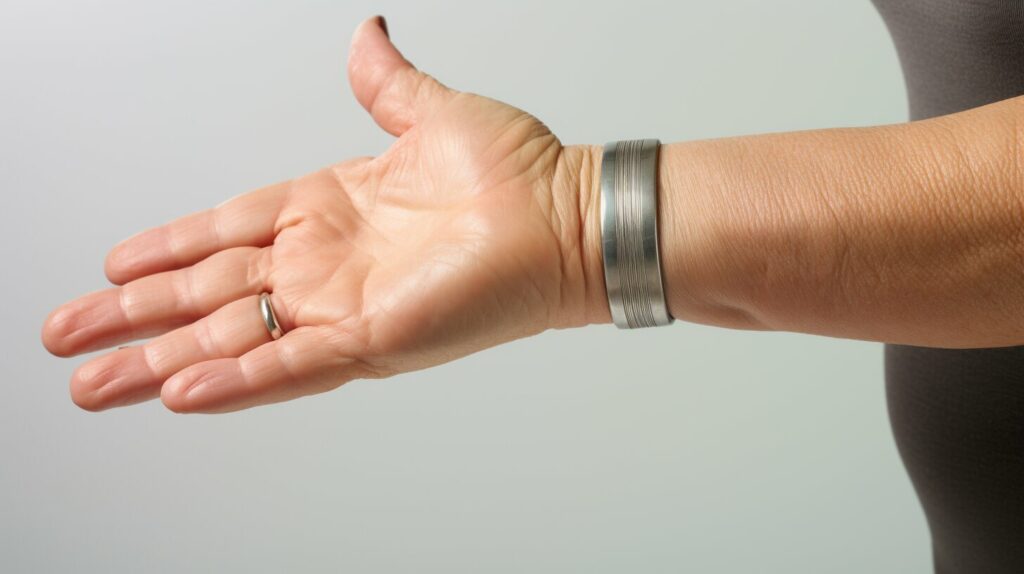
Conclusion
In conclusion, understanding your body type can provide insights into your wrist size, but it is not the sole determinant. Ectomorphs tend to have slender wrists due to their delicate bone structure, while mesomorphs often have well-developed muscles that can create the appearance of proportionate wrists. Endomorphs, with their broader body structure, may have wrists that look proportionate as well. However, it’s essential to remember that genetics, bone structure, and other factors also play a significant role.
While body type does play a part in wrist size, it is just one component of overall body proportions. Each body type has its own unique characteristics, and comparing yourself to unrealistic standards can lead to dissatisfaction. Instead, it’s important to embrace and work with your natural body shape. Focus on overall health and well-being rather than striving for a specific wrist size or body type.
Remember, everyone’s body is unique, and there is no one-size-fits-all ideal. Celebrate and care for your body in a way that feels right for you. By accepting and working with your body type, you can create a fitness and wellness routine that suits you best. Embrace your uniqueness and prioritize your overall well-being above all else.
FAQ
What body type is more likely to have skinny wrists?
According to body type theory, ectomorphs are more likely to have skinny wrists due to their long and lean body shape.
Do all ectomorphs have skinny wrists?
While ectomorphs generally have slender wrists, wrist size can vary among individuals, even within the same body type, due to factors such as genetics and bone structure.
Are mesomorphs more likely to have proportionate wrist size?
Mesomorphs, known for their well-defined muscles, may not have naturally skinny wrists. However, their well-developed muscles can give the appearance of a more proportionate wrist size. Wrist size can still vary among mesomorph individuals based on genetics and other factors.
Do endomorphs have naturally wider wrists?
Endomorphs, characterized by their round and soft body shape, may not have naturally skinny wrists. However, their broader body structure can sometimes make their wrists appear more proportionate. Wrist size can still vary among individuals within the endomorph body type based on genetics and other factors.
What factors influence wrist size apart from body type?
Wrist size is primarily determined by genetics and bone structure. Factors such as the size of the wrist bones and the thickness of the surrounding tissues can contribute to variations in wrist size among individuals. Muscle mass and overall body composition can also affect the appearance of wrist size.
Does body type affect overall body proportions?
Each body type has its own unique characteristics and proportions, which can contribute to an individual’s overall body shape. While certain body types may have a tendency towards wider or narrower wrists, it’s important to consider the entire body’s proportions and embrace your natural body shape.
Should I try to change my body type to have different wrist size?
Instead of striving to change your body type, it’s important to focus on accepting and embracing it. Each body type has its own strengths and challenges. By understanding your body type and working with it, you can create a fitness and wellness routine that is best suited for you.
How does sleep affect fitness goals?
Getting enough quality sleep is crucial for overall health and fitness goals. During sleep, the body produces hormones that aid in fat loss and muscle recovery. Lack of sleep can negatively impact hormone levels, including testosterone and growth hormones, which can hinder progress towards fitness goals.
What are the health impacts of excess body fat?
Excess body fat, regardless of body type, is associated with an increased risk of various health conditions including cardiovascular problems, type 2 diabetes, certain cancers, and gallbladder disease. It’s important to maintain a healthy body weight through a balanced diet and regular physical activity to reduce the risk of these health problems.
What should I take away from this information?
Body type can influence wrist size to some extent, but wrist size is primarily determined by genetics, bone structure, and other individual factors. Embrace and work with your natural body type, focusing on overall health and well-being rather than striving for a specific wrist size or body type. Remember that everyone’s body is unique, and there is no one-size-fits-all ideal.
